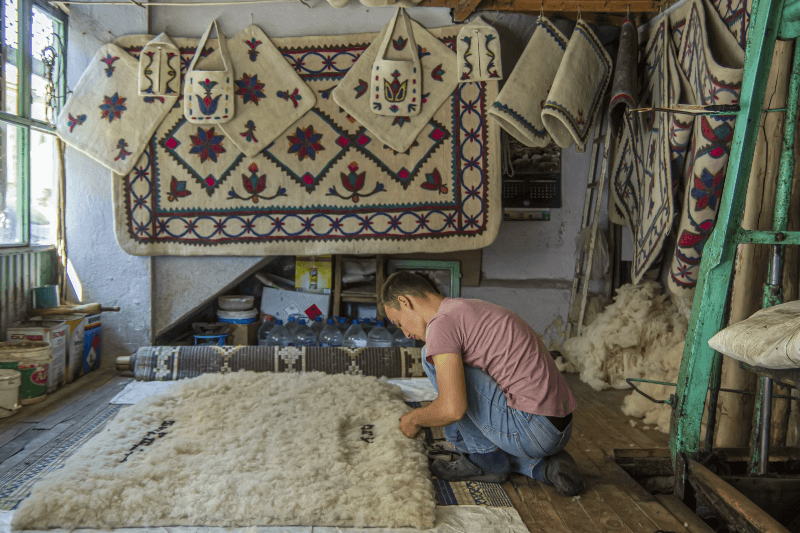Amid Marrakech’s winding lanes and busy antique markets, in the center of the city, lives an age-old Moroccan art—wool felt craft. Although this centuries-old custom is evidence of Morocco’s rich cultural legacy, it is today under grave danger.
Master craftsman Mohammed Belkhou has been learning wool felting for 45 years. The complex process starts with gathering seasonal sheared sheep wool to guarantee best quality. This raw wool needs skill and patience since it is painstakingly cleaned to eliminate contaminants. Wool is next carded using traditional wooden combs with metal teeth, straightening and softening the fibers in readiness for spinning.
Like his forebears, Belkhou works the combed wool fibers into robust, long threads. Applied over the wool fibers, a thick foam produced from hot water combined with black soap is sprayed. This vital stage fixes the fibers and turns them into felt cloth.
“The process calls for physical strength and accuracy,” Belkhou says. “Building felt wool prayer rugs, mattresses, or horse saddles calls for a lot of work”.
The resulting felt is adaptable for saddles, carpets, caps, classic shoes, and accessories. Using hand tools and wooden blocks, each piece is painstakingly shaped—a process that could take three days. Natural dyes and needlework techniques help to add traditional colors and designs, therefore maintaining the authenticity of the work.
The wool felt work does, however, provide several difficulties. Belkhou observes, “There is no market for saddles. This has reduced the demand for other products. Ten years have gone without saddles manufactured for me.
One major obstacle is the declining count of skilled craftsmen. Low financial returns and the great work necessary make the younger generation reluctant to participate in the profession. Furthermore compromising artists’ efforts are the lack of premium raw materials.
“We hardly find wool in great numbers when we visit the market. The lack of demand has also made wool vendors rare,” Belkhou complains.
In response, initiatives to protect this age-old craft are under progress. A training program started by the Moroccan Ministry of Tourism, Crafts and the Social and Solidarity Economy aims to expose young people to wool felting and provide them the required skills.
Hicham Berdouzi, regional head of the handicrafts sector, says “We organized training programs according to new standards and involved stakeholders from the public and private sectors to develop these crafts and find new functions for them.”
Apart from safeguarding Morocco’s cultural legacy, the Ministry seeks to boost the local business. Like British visitor Jane, tourists find great fascination in the work. “This is my first visit and I have never seen a craft this unique. They create tons of varied items, bags, and caps. It’s a quite unique and a really wonderful craft. It takes time, she says.
Keep Reading
Reflecting the time, talent, and quality needed in their production, wool felt objects range in price from 5 euros to 600 euros (about $5-649 USD).
The preservation of such old crafts becomes ever more important as the world evolves to guarantee that Morocco’s rich cultural legacy is passed on to next generations.

